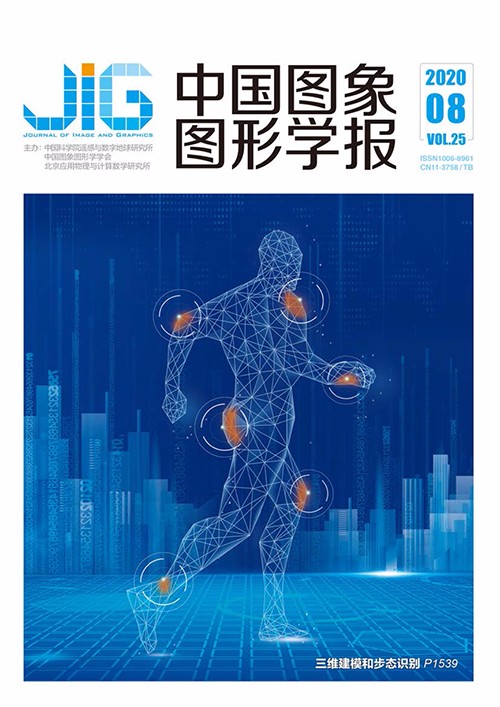
多模态生物特征提取及相关性评价综述
摘 要
生物特征识别是身份认证的重要手段,特征提取技术在其中扮演了关键角色,直接影响识别的结果。随着特征提取技术日趋成熟,学者们逐渐将目光投向了生物特征间的相关性问题。本文以单模态和多模态生物识别中的特征提取方法为研究对象,回顾了人脸与指纹的特征提取方法,分析了基于经验知识的特征分类提取方法以及基于深度学习的计算机逻辑采样提取方法,并从图像处理的角度对单模态与多模态方法进行对比。以当前多模态生物特征提取方法和DNA表达过程为引,提出了不同模态的生物特征之间存在相关性的猜想,以及对这一猜想进行建模的思路。在多模态生物特征提取的基础上,对今后可能有进展的各生物特征之间的相关性建模进行了展望。
关键词
Extraction and relevance evaluation for multimodal biometric features
Yang Xuehe1, Liu Huanxi2, Xiao Jianli1(1.School of Optical-Electrical and Computer Engineering, University of Shanghai for Science and Technology, Shanghai 200093, China;2.Office of Research Management, Shanghai Jiao Tong University, Shanghai 200240, China) Abstract
Biometrics, which is an important means of identity authentication, has been integrated into all aspects of daily life. The convenience and efficiency of single-modal biometrics and the reliability of multimodal biometrics have enabled the feature extraction technology to play a key role in directly affecting recognition results. As feature extraction techniques mature, researchers are turning their attention to the relevance of biometrics. In this research, the feature extraction methods in single-modal and multimodal biometrics are the object. We first review the feature extraction methods of face and fingerprint through the literature. The fingerprint feature extraction methods can roughly be divided into two categories. The first category calculates the fingerprint direction, which completes the estimation and judgment of the fingerprint local or the hole direction field. This method can be subdivided into three categories, which utilize gradient vector, filter, or mathematical model to build the fingerprint direction field. The second category targets the fingerprint pattern area, and the widely utilized methods are presented in this paper. Face feature extraction is based on the face representation process. Face representation can be divided into 2D-and 3D-based face representation methods according to different data represented by face. Pixels, including different color or points, are converted into feature vectors for different facial features that are invisible to the naked eye. In the traditional identification method, this recognition process relies on the accumulation of biometrics and recognition experience known to humans. A computer can learn and generalize when machine learning and deep learning are introduced. It can gradually overcome the cognitive deficit of humanity in face recognition and other fields. We analyze feature classification based on empirical knowledge and computer logic sampling extraction based on deep learning and operate these methods on single mode and multimode. The modeling of the correlation among biometrics that may progress in the future is explored on the basis of a comparison of multimodal biometrics. The knowledge gained in the field of computer science comes entirely from the natural evolution of our own or the Earth. Current results of single-modal and multimodal biometric technologies have saturated with the current requirements for identity verification applications. The high-efficiency and high-precision biofeature extraction method and the feature extraction requirements under the biorecognition framework are matched effectively. However, the study of the correlation among different biometrics remains blank. Such study is significant not only for image processing but also for many subdisciplines in the biological field. In this paper, we explain the feasibility of modeling the correlation among biometrics from the perspective of image processing. The assumption that biometrics can be converted into one another in the form of computer images is based on the following points:1) the origin of biometrics comes from DNA strands, which makes the characteristics of each individual possess mutualism and universality; 2) features obtained from images do not have the irreversibility of complex transformation processes, such as DNA to protein construction; 3) the aggregation, analysis, and coding of features can be realized on computers, and the vision of a computer gives it a stability that is far superior to that of human vision in the classification process. Biometric feature extraction methods based on single-modality and multimodality have been applied extensively. The current results of single-modal and multimodal biometric extraction techniques are reviewed, and the correlation between biometrics and their application prospects is determined.
Keywords
|



 中国图象图形学报 │ 京ICP备05080539号-4 │ 本系统由
中国图象图形学报 │ 京ICP备05080539号-4 │ 本系统由